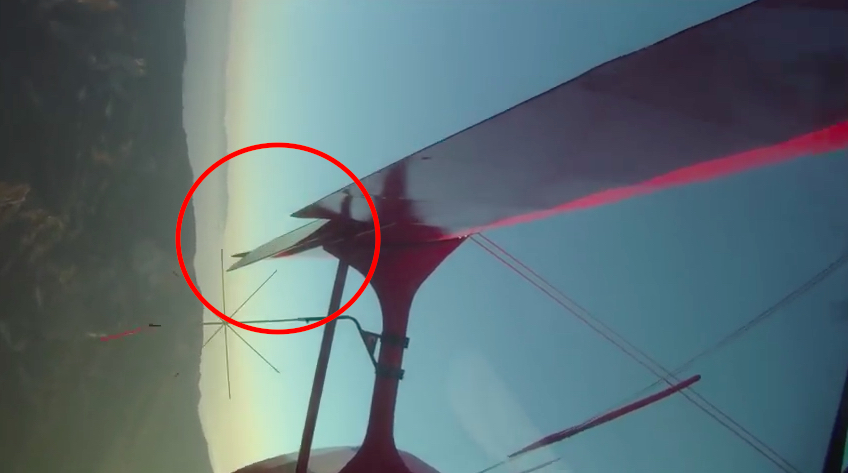The Hammerhead
The hammerhead is one of the more physically complicated aerobatic
maneuvers, and it also happens to be one of the more difficult to
master (and easy to botch) maneuvers.
The Maneuver
In the hammerhead, the pilot uses a pull of anywhere from 3.5-4.5 g to establish a vertical line on the wing's zero-lift axis, which means that the motion of the airplane in the vertical line could be described through simple 1D kinematics (and possibly dynamics, if you wish to account for the force of thrust). This is held until the airplane runs out of speed. Then, through full left rudder and some other control movements (explained later), he pivots the airplane on its side to a vertical downline. While a text description may be difficult to visualize, a GIF of a hammerhead may help explain it:

Adverse Forces: Torque
At the end of the vertical portion of the hammerhead and during the pivot, the airspeed of the airplane is practically zero:

(Photo by me)
This means that the reaction force of torque (the one the causes a left rolling moment of the airplane) is in full swing, so to speak. Typically, countering this force would require just a bit of right aileron to induce a right rolling motion, leaving unadulterated yaw, and perfect 10s on the judges' scorecards, but since the airspeed is so low during the pivot, we need a large amount of aileron. In the Bellanca Super Decathlon, I use full right aileron to counter the engine torque. This technique applies to other airplanes too:

(Photo: Sammy Mason)
Adverse Forces: Gyroscopic Precession
Recall that gyroscopic precession causes forces on the airplane 90° away from the direction that the original force was applied. When the airplane has run out of speed in the vertical line and the pivot begins, the entire airplane experiences a yawing motion that pushes it to the left.
This "push" can be thought of as having occurred on the right side of the propeller. Since the resultant force will happen 90° along the arc of the propeller, the precession of the propeller will try to pull the airplane onto its back during the pivot. To counter this, we use forward elevator (stick) during the pivot.
All of this together this means that 2/3 of the control inputs during the hammerhead are solely to counter forces generated by the propeller!